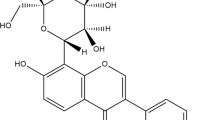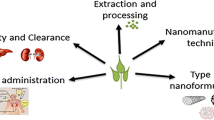Abstract
Traumatic axonal damage disrupts connections between neurons, leading to the loss of motor and sensory functions. Although damaged peripheral nerves can regenerate, recovery depends on the variety and severity of nerve damage. Thus, many phytochemicals have been studied for their ability to reduce peripheral nerve degeneration, and among them, Parthenolide (PTL), which is extracted from Feverfew has effects against production of free radicals, inflammation, and apoptosis. Thus, we conducted a study to investigate whether PTL has an inhibitory effect on peripheral nerve degeneration during peripheral nerve damage. To verify the effect of PTL on peripheral nerve degeneration process, a morphological comparison of peripheral nerves with and without PTL was performed. PTL significantly reduced the quantity of fragmented ovoid formations at 3DIV (days in vitro). Immunostaining for MBP revealed that the ratio of intact myelin sheaths increased significantly in sciatic nerve with PTL compared with absence of PTL at 3DIV. Furthermore, nerve fibers in the presence of PTL maintained the continuity of Neurofilament (NF) compared to those without at 3DIV. Immunostaining for LAMP1 and p75 NTR showed that the expression of LAMP1 and p75 NTR decreased in the nerve after PTL addition at 3DIV. Lastly, immunostaining for anti-Ki67 revealed that PTL inhibited Ki67 expression at 3DIV compared to without PTL. These results confirm that PTL inhibits peripheral nerve degenerative processes. PTL may be a good applicant to inhibit peripheral nerve degeneration. Our study examined the effect of Parthenolide in preventing degeneration of peripheral nerves by inhibiting the breakdown of peripheral axons and myelin, also inhibiting Schwann cell trans-dedifferentiation and proliferation.





Similar content being viewed by others
References
Akan I, Akan S, Akca H, Savas B, Ozben T (2005) Multidrug resistance-associated protein 1 (MRP1) mediated vincristine resistance: effects of N-acetylcysteine and Buthionine sulfoximine. Cancer Cell Int 5:1–9
Carlisi D, Danneo A, Angileri L et al (2011) Parthenolide sensitizes hepatocellular carcinoma cells to TRAIL by inducing the expression of death receptors through inhibition of STAT3 activation. J Cell Physiol 226:1632–1641
Chen K-F, Tai W-T, Liu T-H et al (2010) Sorafenib overcomes TRAIL resistance of hepatocellular carcinoma cells through the inhibition of STAT3sorafenib overcomes TRAIL resistance of HCC. Clin Cancer Res 16:5189–5199
Cheng G, Xie L (2011) Parthenolide induces apoptosis and cell cycle arrest of human 5637 bladder cancer cells in vitro. Molecules 16:6758–6768
Dai Y, Guzman ML, Chen S et al (2010) The NF (Nuclear factor)-κB inhibitor parthenolide interacts with histone deacetylase inhibitors to induce MKK7/JNK1-dependent apoptosis in human acute myeloid leukaemia cells. Br J Haematol 151:70–83
Dinarello CA (1998) Interleukin-1, interleukin-1 receptors and interleukin-1 receptor antagonist. Int Rev Immunol 16:457–499
Ding W, Cai C, Zhu X, Wang J, Jiang Q (2022) Parthenolide ameliorates neurological deficits and neuroinflammation in mice with traumatic brain injury by suppressing STAT3/NF-κB and inflammasome activation. Int Immunopharmacol 108:108913
Gaojian T, Dingfei Q, Linwei L et al (2020) Parthenolide promotes the repair of spinal cord injury by modulating M1/M2 polarization via the NF-κB and STAT 1/3 signaling pathway. Cell Death Discov 6:1–16
Ghantous A, Sinjab A, Herceg Z, Darwiche N (2013) Parthenolide: from plant shoots to cancer roots. Drug Discov Today 18:894–905
Glenn TD, Talbot WS (2013) Signals regulating myelination in peripheral nerves and the Schwann cell response to injury. Curr Opin Neurobiol 23:1041–1048
Gobrecht P, Andreadaki A, Diekmann H, Heskamp A, Leibinger M, Fischer D (2016) Promotion of functional nerve regeneration by inhibition of microtubule detyrosination. J Neurosci 36:3890–3902
Gopal YV, Arora TS, van Dyke MW (2007) Parthenolide specifically depletes histone deacetylase 1 protein and induces cell death through ataxia telangiectasia mutated. Chem Biol 14:813–823
Guzman ML, Rossi RM, Karnischky L et al (2005) The sesquiterpene lactone parthenolide induces apoptosis of human acute myelogenous leukemia stem and progenitor cells. Blood 105:4163–4169
Hehner SP, Hofmann TG, Drøge W, Schmitz ML (1999) The antiinflammatory sesquiterpene lactone parthenolide inhibits NF-κB by targeting the IκB kinase complex. J Immunol 163:5617–5623
Heng HH, Stevens JB, Liu G, Bremer SW, Ye CJ (2004) Imaging genome abnormalities in cancer research. Cell & Chromosome 3:1–12
Heptinstall S, Groenewegen W, Spangenberg P, Loesche W (1987) Extracts of feverfew may inhibit platelet behaviour via neutralization of sulphydryl groups. J Pharm Pharmacol 39:459–465
Hou Y, Sun B, Liu W et al (2021) Targeting of glioma stem-like cells with a parthenolide derivative ACT001 through inhibition of AEBP1/PI3K/AKT signaling. Theranostics 11:555
Jessen K, Mirsky R (2016) The repair Schwann cell and its function in regenerating nerves. J Physiol 594:3521–3531
Juliana C, Fernandes-Alnemri T, Wu J et al (2010) Anti-inflammatory compounds parthenolide and Bay 11–7082 are direct inhibitors of the inflammasome. J Biol Chem 285:9792–9802
Jung J, Cai W, Jang SY et al (2011) Transient lysosomal activation is essential for p75 nerve growth factor receptor expression in myelinated Schwann cells during Wallerian degeneration. Anatomy Cell Biol 44:41–49
Kanda N, Seno H, Konda Y et al (2004) STAT3 is constitutively activated and supports cell survival in association with survivin expression in gastric cancer cells. Oncogene 23:4921–4929
Kiuchi H, Takao T, Yamamoto K et al (2009) Sesquiterpene lactone parthenolide ameliorates bladder inflammation and bladder overactivity in cyclophosphamide induced rat cystitis model by inhibiting nuclear factor-κB phosphorylation. J Urol 181:2339–2348
Kobayashi M, Ishibashi S, Tomimitsu H, Yokota T, Mizusawa H (2012) Proliferating immature schwann cells contribute to nerve regeneration after ischemic peripheral nerve injury. J Neuropathol Exp Neurol 71:511–519
Lee H, Cha M-K, Kim I-H (2000) Activation of thiol-dependent antioxidant activity of human serum albumin by alkaline pH is due to the B-like conformational change. Arch Biochem Biophys 380:309–318
Liu Q, Zhao J, Tan R et al (2015) Parthenolide inhibits pro-inflammatory cytokine production and exhibits protective effects on progression of collagen-induced arthritis in a rat model. Scand J Rheumatol 44:182–191
Ma X, Lin W, Lin Z et al (2017) Liraglutide alleviates H2O2-induced retinal ganglion cells injury by inhibiting autophagy through mitochondrial pathways. Peptides 92:1–8
Mao W, Zhu Z (2018) Parthenolide inhibits hydrogen peroxide-induced osteoblast apoptosis. Mol Med Rep 17:8369–8376
Mathema VB, Koh Y-S, Thakuri BC, sillanpaa M, (2012) Parthenolide, a sesquiterpene lactone, expresses multiple anti-cancer and anti-inflammatory activities. Inflammation 35:560–565
Minucci S, Pelicci PG (2006) Histone deacetylase inhibitors and the promise of epigenetic (and more) treatments for cancer. Nat Rev Cancer 6:38–51
Mohammadi R, Yadegarazadi M-J, Amini K (2014) Peripheral nerve regeneration following transection injury to rat sciatic nerve by local application of adrenocorticotropic hormone. J Cranio Maxill Sur 42:784–789
Nakshatri H, Rice SE, Bhat-Nakshatri P (2004) Antitumor agent parthenolide reverses resistance of breast cancer cells to tumor necrosis factor-related apoptosis-inducing ligand through sustained activation of c-Jun N-terminal kinase. Oncogene 23:7330–7344
Pareek A, Suthar M, Rathore GS, Bansal V (2011) Feverfew (Tanacetum parthenium L.) a systematic review. Pharmacognosy Rev 5(103):112
Park BS, Kim HW, Rhyu IJ et al (2015) Hydrogen sulfide is essential for schwann cell responses to peripheral nerve injury. J Neurochem 132:230–242
Payne CM, Weber C, Crowley-skillicorn C et al (2007) Deoxycholate induces mitochondrial oxidative stress and activates NF-κB through multiple mechanisms in HCT-116 colon epithelial cells. Carcinogenesis 28:215–222
Pehar M, Cassina P, Vargas MR et al (2004) Astrocytic production of nerve growth factor in motor neuron apoptosis: implications for amyotrophic lateral sclerosis. J Neurochem 89:464–473
Santin Y, Sicard P, Vigneron F et al (2016) Oxidative stress by monoamine oxidase-a impairs transcription factor EB activation and autophagosome clearance, leading to cardiomyocyte necrosis and heart failure. Antioxid Redox Signal 25:10–27
Shahim P, Gren M, Liman V et al (2016) Serum neurofilament light protein predicts clinical outcome in traumatic brain injury. Sci Rep 6:36791
Smolinski AT, Pestka JJ (2005) Comparative effects of the herbal constituent parthenolide (Feverfew) on lipopolysaccharide-induced inflammatory gene expression in murine spleen and liver. J Inflamm 2:1–8
Sun Y, StClair DK, Xu Y, Crooks PA, StClair WH (2010) A nadph oxidase–dependent redox signaling pathway mediates the selective radiosensitization effect of parthenolide in prostate cancer cells. Can Res 70:2880–2890
Tacchini L, de Ponti C, Matteucci E, Follis R, Desiderio M (2004) Hepatocyte growth factor-activated NF-κB regulates HIF-1 activity and ODC expression, implicated in survival, differently in different carcinoma cell lines. Carcinogenesis 25:2089–2100
Wang W, Adachi M, Kawamura R et al (2006) Parthenolide-induced apoptosis in multiple myeloma cells involves reactive oxygen species generation and cell sensitivity depends on catalase activity. Apoptosis 11:2225–2235
Wang JT, Medress ZA, Barres BA (2012) Axon degeneration: molecular mechanisms of a self-destruction pathway. J Cell Biol 196:7–18
Wang JA, Tong ML, Zhao B, Zhu G, Xi DH, Yang JP (2020) Parthenolide ameliorates intracerebral hemorrhage-induced brain injury in rats. Phytother Res 34:153–160
Winterwourn CC, Hampton MB (2008) Thiol chemistry and specificity in redox signaling. Free Radical Biol Med 45:549–561
Wu C, Chen F, Rushing JW et al (2006) Antiproliferative activities of parthenolide and golden feverfew extract against three human cancer cell lines. J Med Food 9:55–61
Zhang S, Ong C-N, Shen H-M (2004) Critical roles of intracellular thiols and calcium in parthenolide-induced apoptosis in human colorectal cancer cells. Cancer Lett 208:143–153
Zhao ZJ, Xiang JY, Liu L, Huang XL, Gan HT (2012) Parthenolide, an inhibitor of the nuclear factor-κB pathway, ameliorates dextran sulfate sodium-induced colitis in mice. Int Immunopharmacol 12:169–174
Zhao Z, Li X, Li Q (2017) Curcumin accelerates the repair of sciatic nerve injury in rats through reducing Schwann cells apoptosis and promoting myelinization. Biomed Pharmacother 92:1103–1110
Acknowledgements
This work was supported by the National Research Foundation of Korea (NRF) grant funded by the Korea government (MSIT) (NO. 2022R1F1A1072918)
Institutional Review Board Statement
The animal study protocol was approved by the Institutional Review Board of Kyung Hee University Medical Center Medical Science Research Institute Animal Laboratory (KHMC-IACUC 2021-108).
Author information
Authors and Affiliations
Contributions
Conceptualization, SHK; methodology,JSC; software, JSC; validation, SGY; formal analysis, JSC; investigation, JJ; resources, JMK; data curation, JSC; writing—original draft preparation, JMK; writing—review and editing, SHK; visualization, JSC; supervision, JJ and SGY; project administration, SHK; funding acquisition, SHK All authors have read and agreed to the published version of the manuscript.
Corresponding author
Ethics declarations
Conflicts of interest
The authors declare no conflict of interest.
Additional information
Publisher's Note
Springer Nature remains neutral with regard to jurisdictional claims in published maps and institutional affiliations.
Rights and permissions
Springer Nature or its licensor (e.g. a society or other partner) holds exclusive rights to this article under a publishing agreement with the author(s) or other rightsholder(s); author self-archiving of the accepted manuscript version of this article is solely governed by the terms of such publishing agreement and applicable law.
About this article
Cite this article
Kim, J.M., Choi, J.S., Jung, J. et al. Inhibitory effect of parthenolide on peripheral nerve degeneration. Anat Sci Int 98, 529–539 (2023). https://doi.org/10.1007/s12565-023-00718-6
Received:
Accepted:
Published:
Issue Date:
DOI: https://doi.org/10.1007/s12565-023-00718-6




